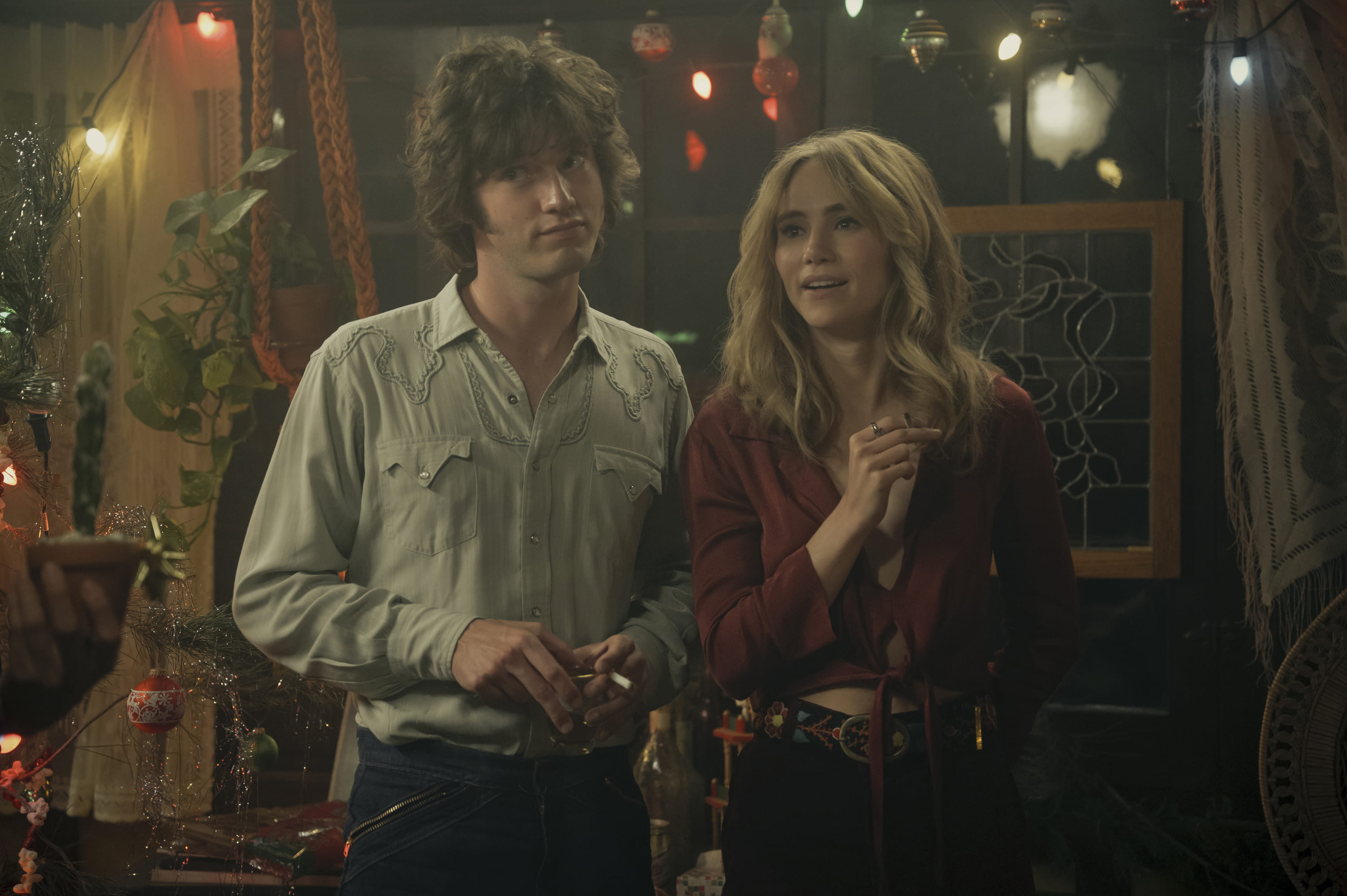
Will Harrison (Graham), Suki Waterhouse (Karen) in “Daisy Jones & the Six.” Credit: Lacey Terrell/Prime Video via TNS
Daisy Jones & The Six may be a fictitious band, but it’s having a cultural impact.
“Daisy Jones & The Six,” an Amazon Original miniseries based on Taylor Jenkins Reid’s best-selling novel of the same name, chronicles the formation and dissolution of a 1970s rock-and-roll band. Ohio State experts and students break down the show and its impact.
The show is shot as a frame story juxtaposing ‘90s documentary-esque interviews of the band with flashbacks to the ‘70s. The show examines the emotionally charged relationship between frontmen Daisy Jones (Riley Keough) and Billy Dunne (Sam Claflin). Set against the backdrop of Los Angeles’ Sunset Strip, “Daisy Jones & The Six” shines a spotlight on ‘70s aesthetics.
Daisy and Billy are loosely inspired by Stevie Nicks and Lindsey Buckingham of Fleetwood Mac, Reid said in a 2019 Q&A video released by Penguin Books. Fleetwood Mac’s clothing typically exuded a free-spirited flair, Gayle Strege, the curator of Ohio State’s Historic Costume & Textiles Collection, said.
“Fleetwood Mac, they were just kind of an exaggeration of some of the ‘70s hippie styles,” Strege said. “I think that there were a number of bands in the ‘70s that had kind of a more relaxed, casual style.”
Fashion in the ‘70s was influenced by 1930s trends and silhouettes, Strege said. Films, such as “Bonnie and Clyde,” which hit theaters in 1967, repopularized garments ranging from three-piece suits to draped blouses, she said.
Bell-bottoms, peasant dresses and leisure suits were also worn extensively in the 1970s, Strege said. She said conveying an aggressive sense of individualism through one’s wardrobe was desirable.
“That whole style of the ‘70s was such a baby boom, youth generation kind of style,” Strege said. “It was very liberating in the sense that a lot of those young people were really rebelling against the real tailored look of their parents.”
Today’s consumers often aspire to similar ideals of boldness and eccentricity leading well-known brands to capitalize on ‘70s fashion trends. Most recently, Free People — a bohemian-inspired clothing retailer — partnered with Amazon Prime Video to sell a “Daisy Jones & The Six” capsule collection.
Elena Cruz-López, a Ph.D. candidate in the School of Music, said “Daisy Jones & The Six” is an experimental piece of historical fiction. Though an in-universe album titled “Aurora” derives its sound from the 1970s rock genre, it is still contemporarily produced and bound to feel somewhat current, she said.
“When you put the image and the music together, you’re transported back to the ‘70s, but it’s a new ‘70s that we haven’t seen,” Cruz-López said.
Cruz-López, who studies musicology and Women’s Gender and Sexuality Studies, said many viewers find Jones endearing because of her story arc about wanting respect as an artist. She said women have been historically dismissed and taken advantage of in the music industry, so Jones’ refusal to be sidelined is an admirable quality.
However, Daisy is an undeniably flawed protagonist and owns her various imperfections, Cruz-López said.
“I think that resonates with a lot of people,” Cruz-López said. “Because the reality is that none of us are perfect.”
Romanticization of past decades likely increased at the height of the COVID-19 pandemic in 2020, Cruz-López said. She said watching “Daisy Jones & The Six” allows people to vicariously experience L.A.’s ‘70s rock scene, even if its representation is idealized at times.
“Sometimes we use nostalgia to escape whatever we’re feeling in the moment,” Cruz-López said. “I think it’s OK to feel good feelings.”
“Daisy Jones & The Six” is streaming on Prime Video at the time of publication. The show’s final two episodes will premiere Friday.


